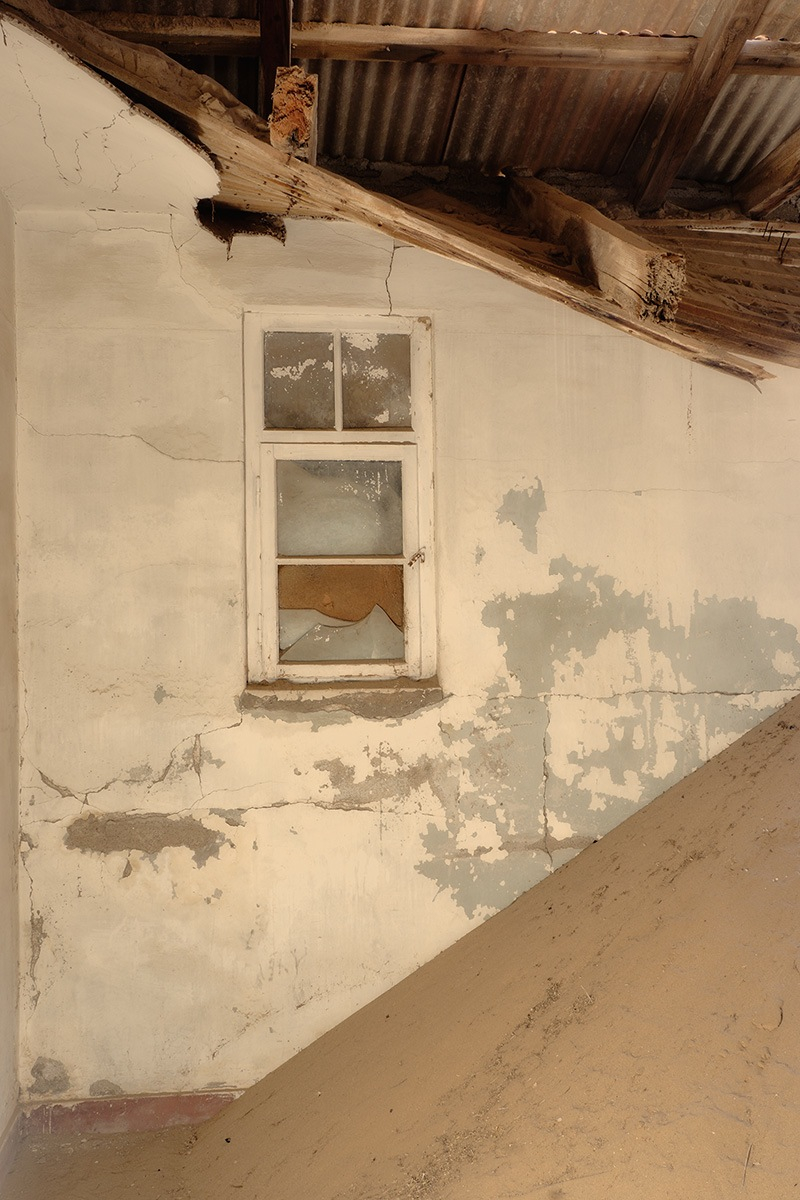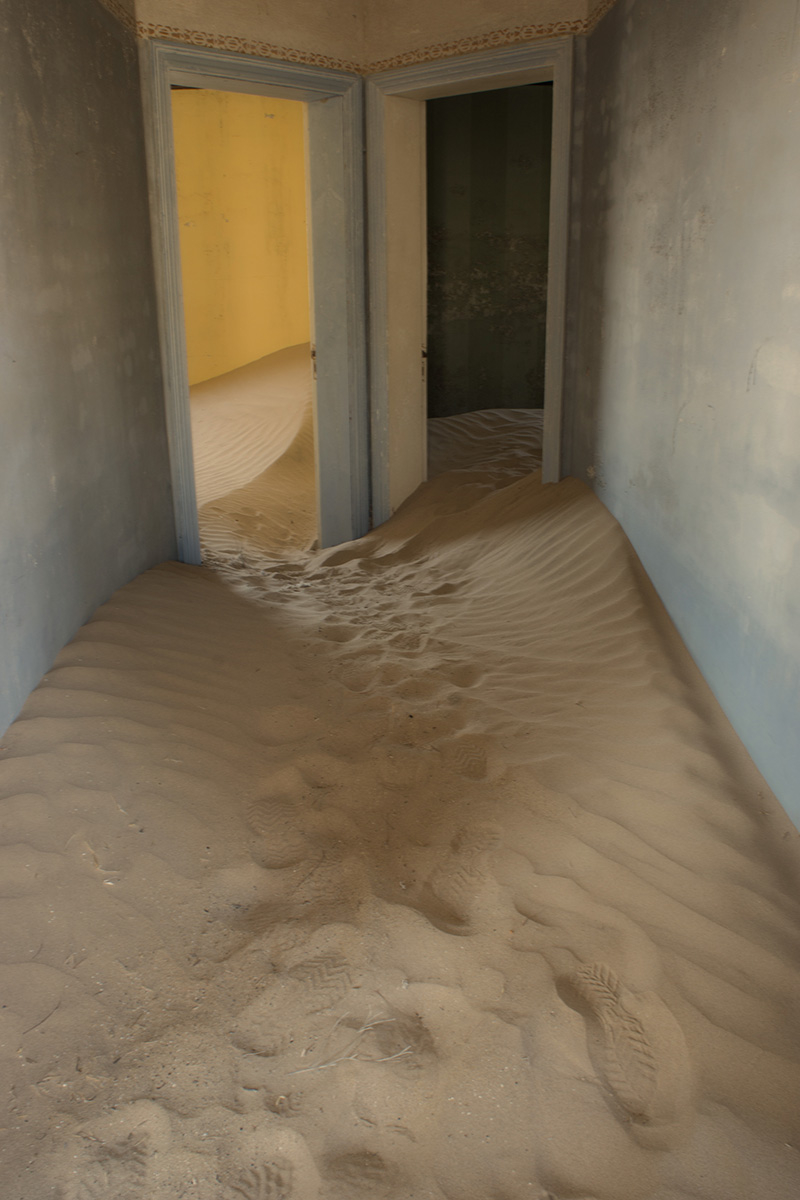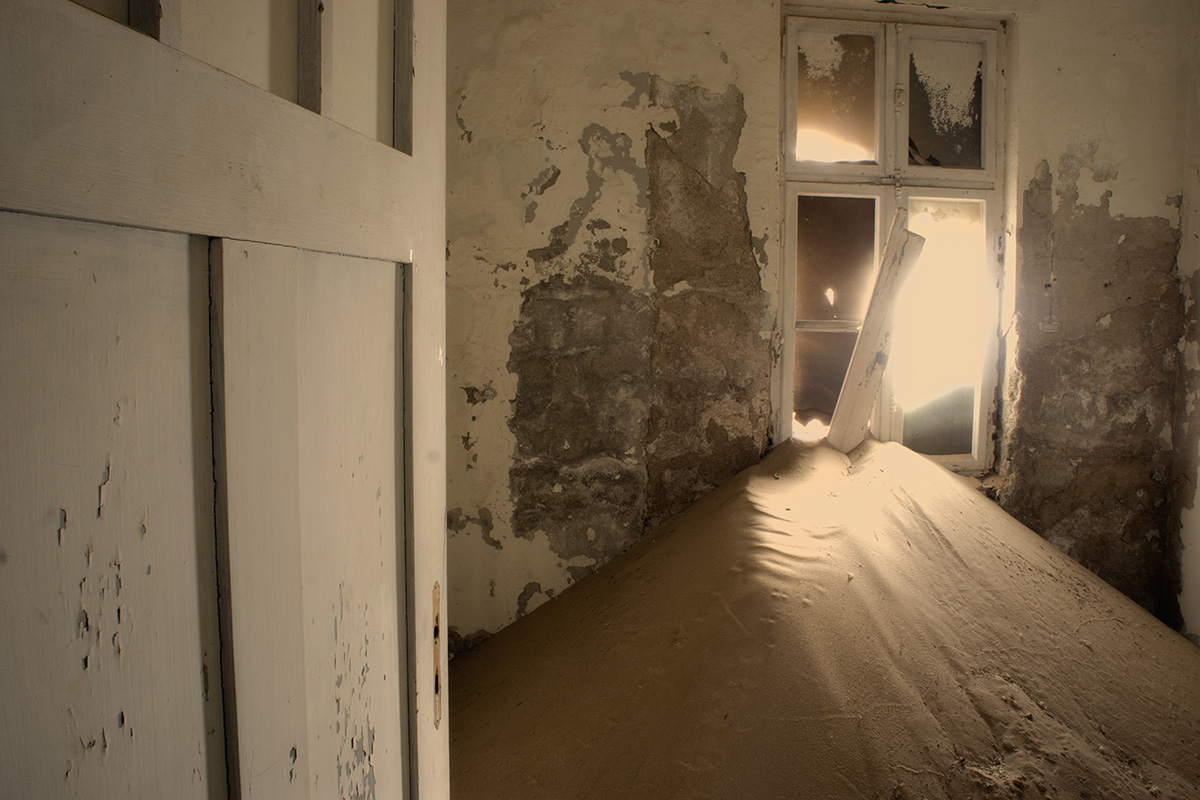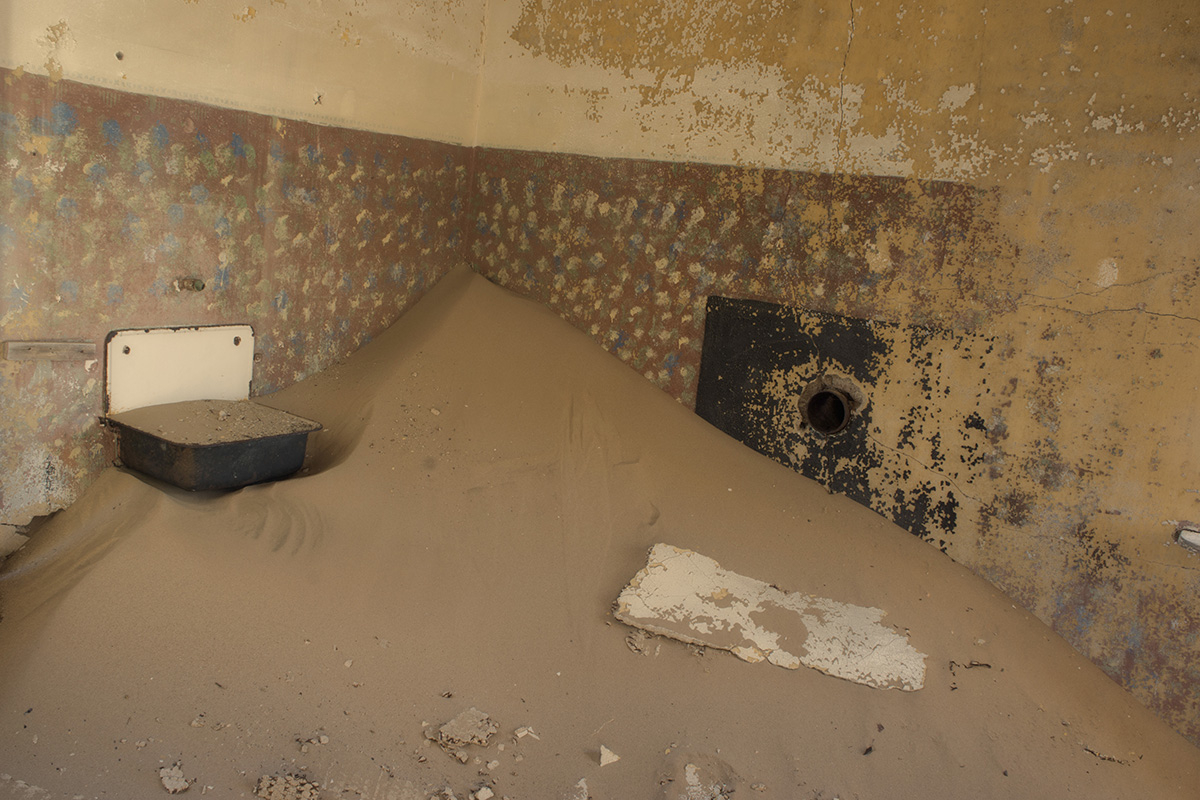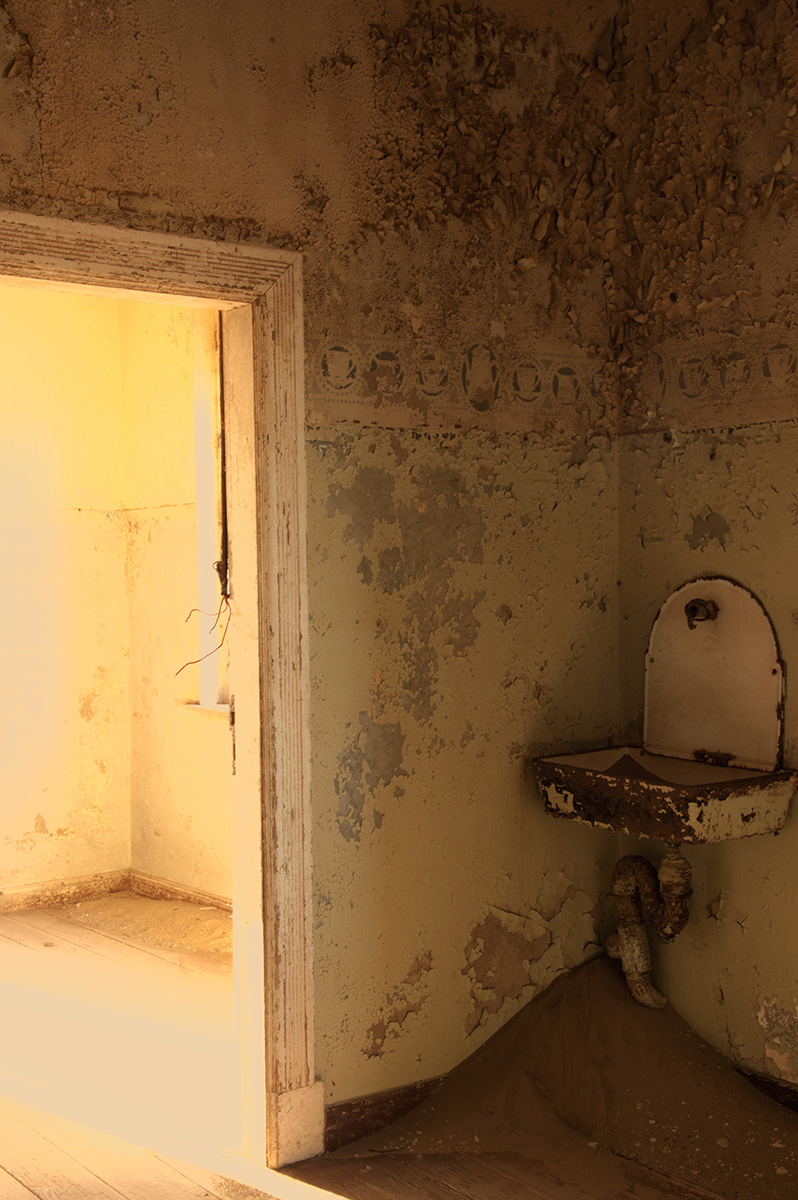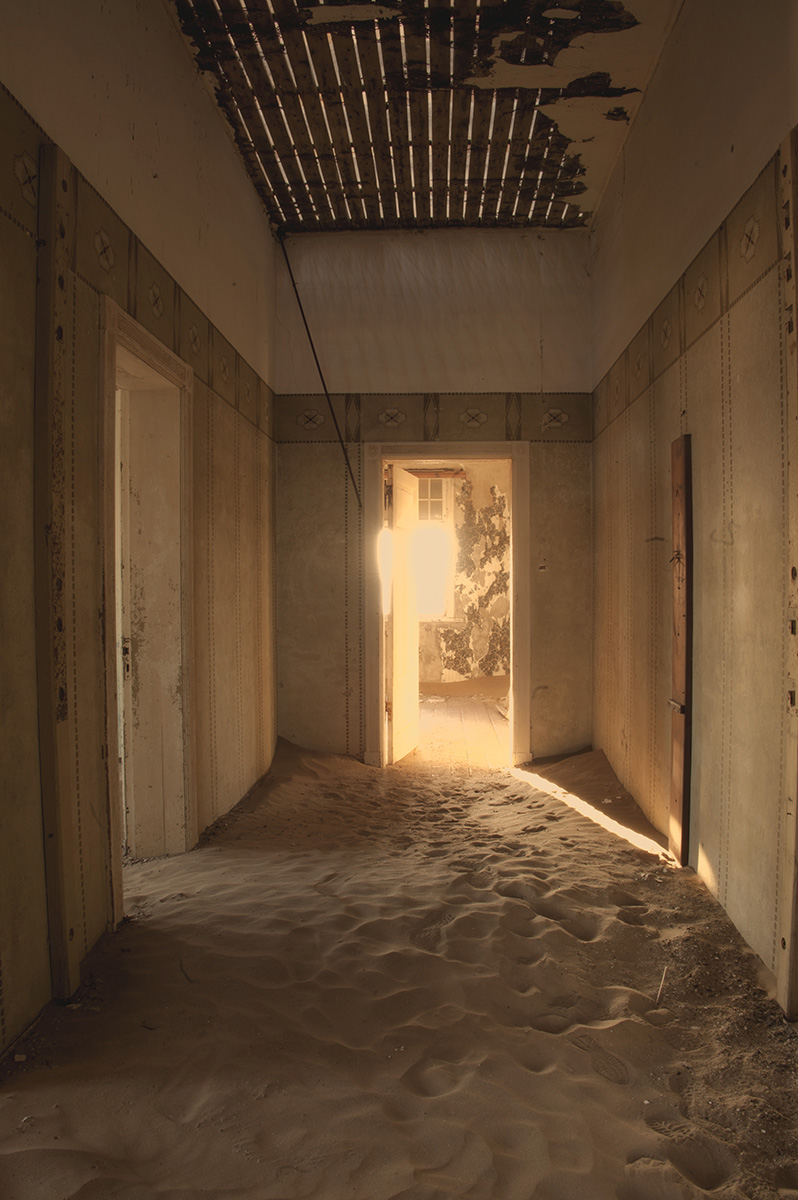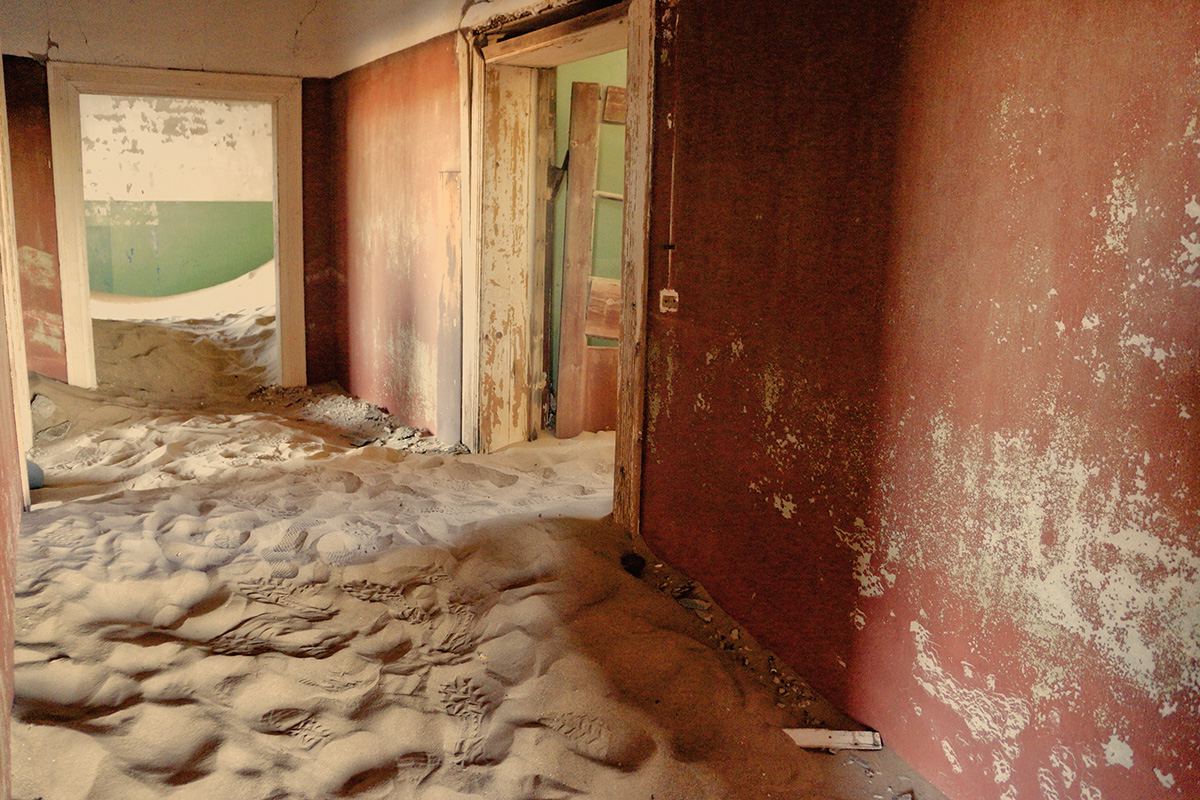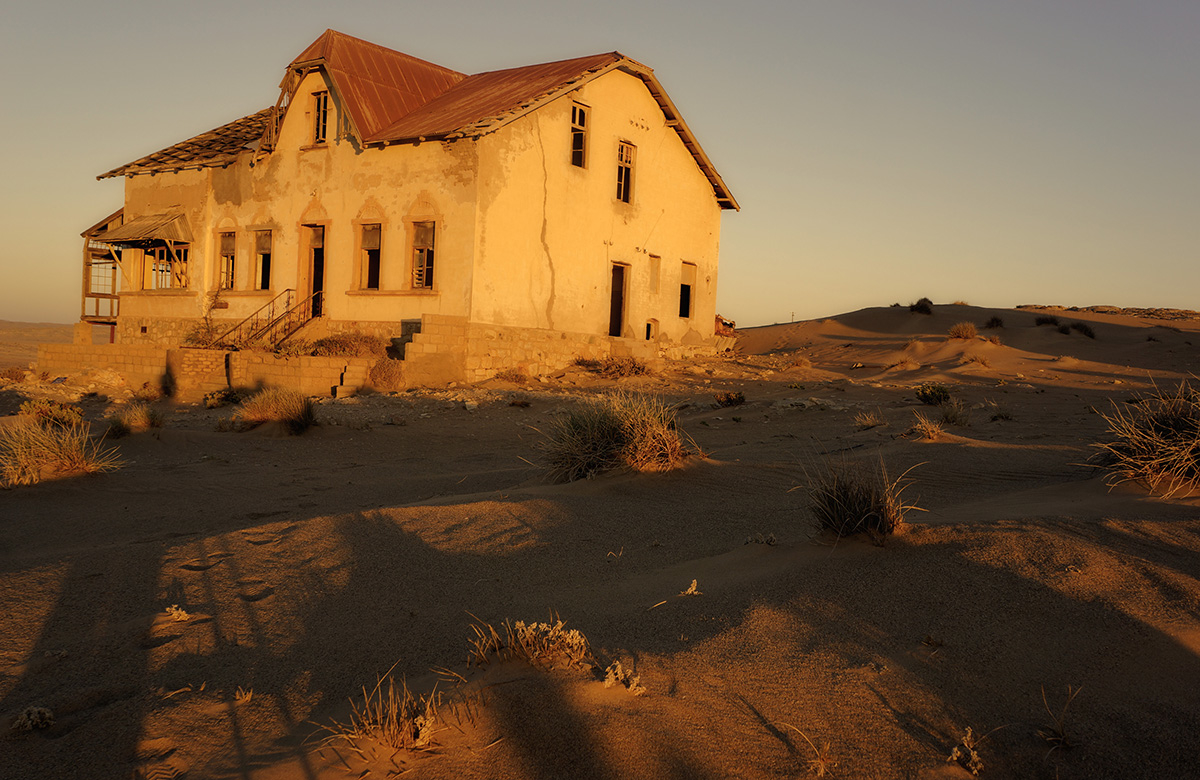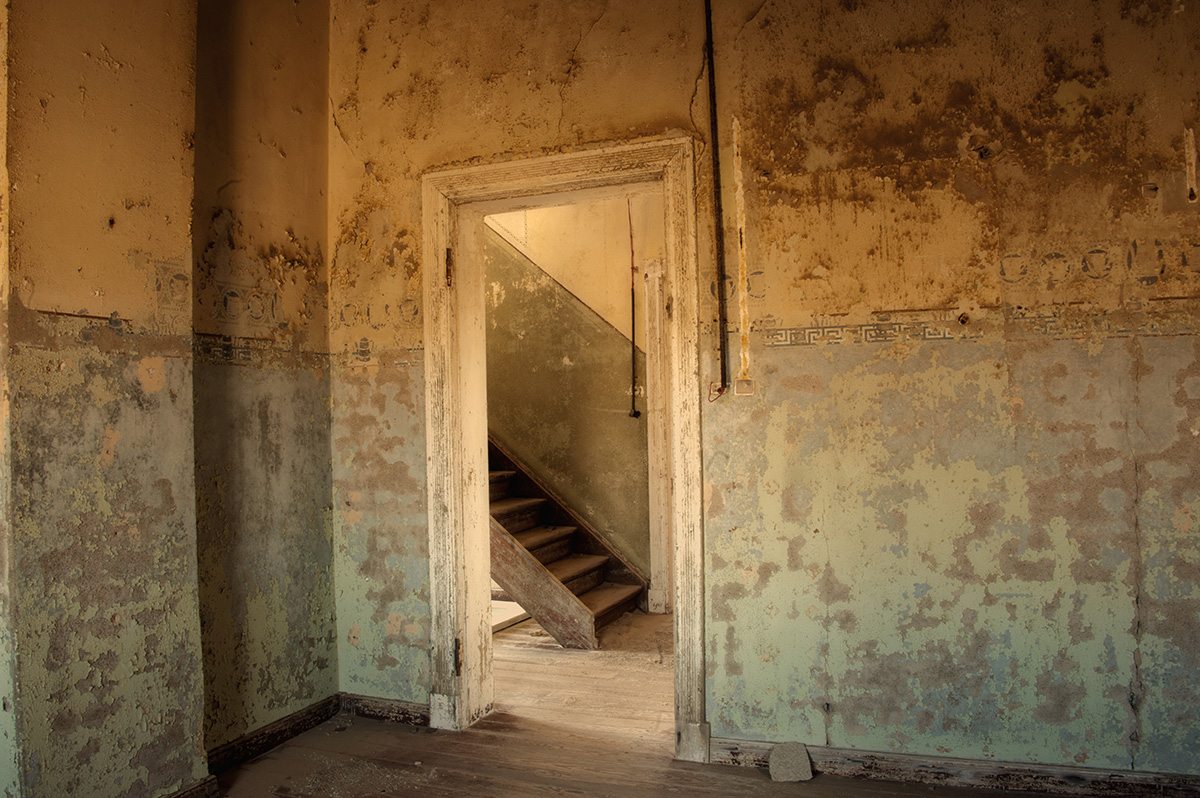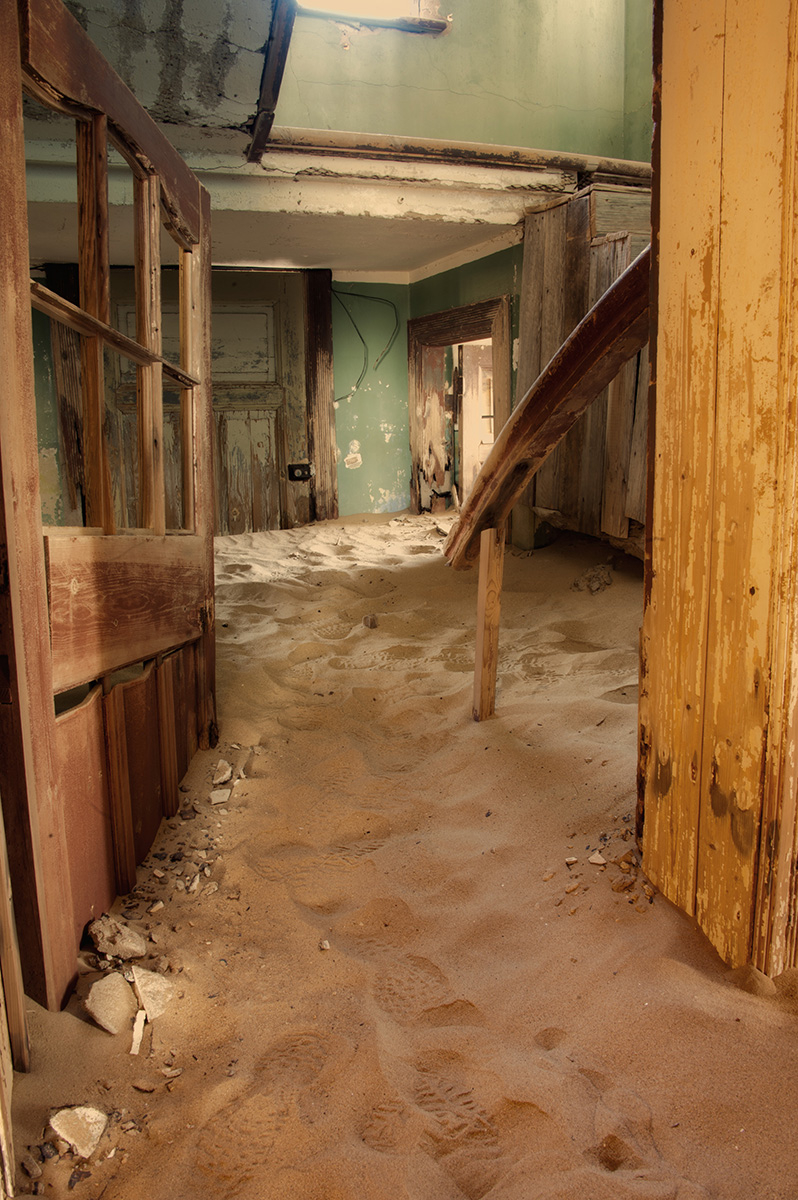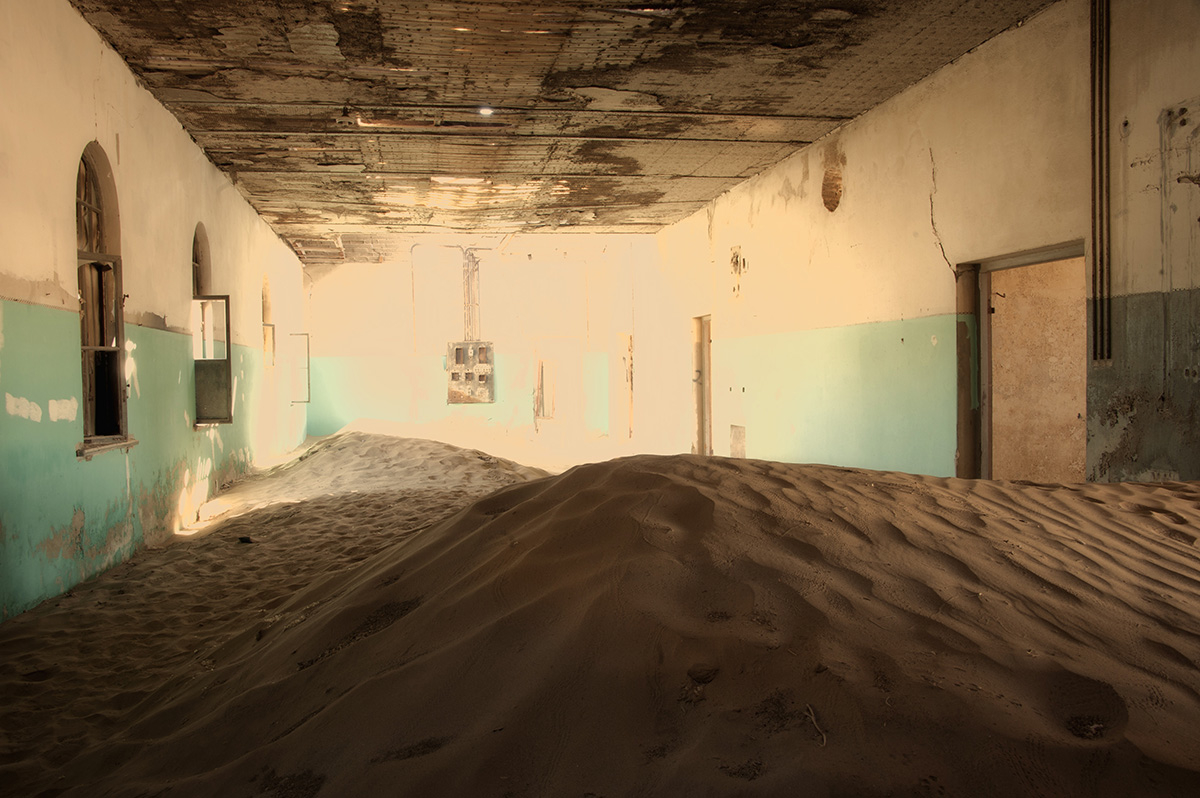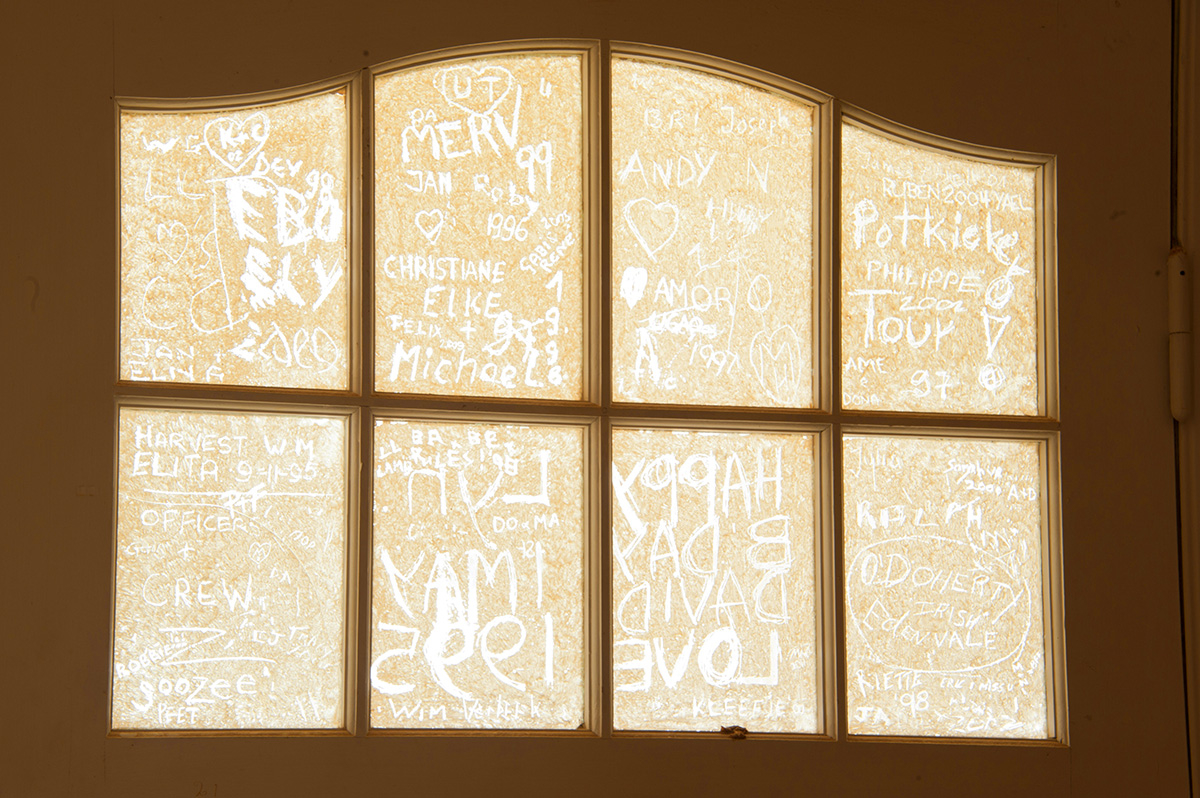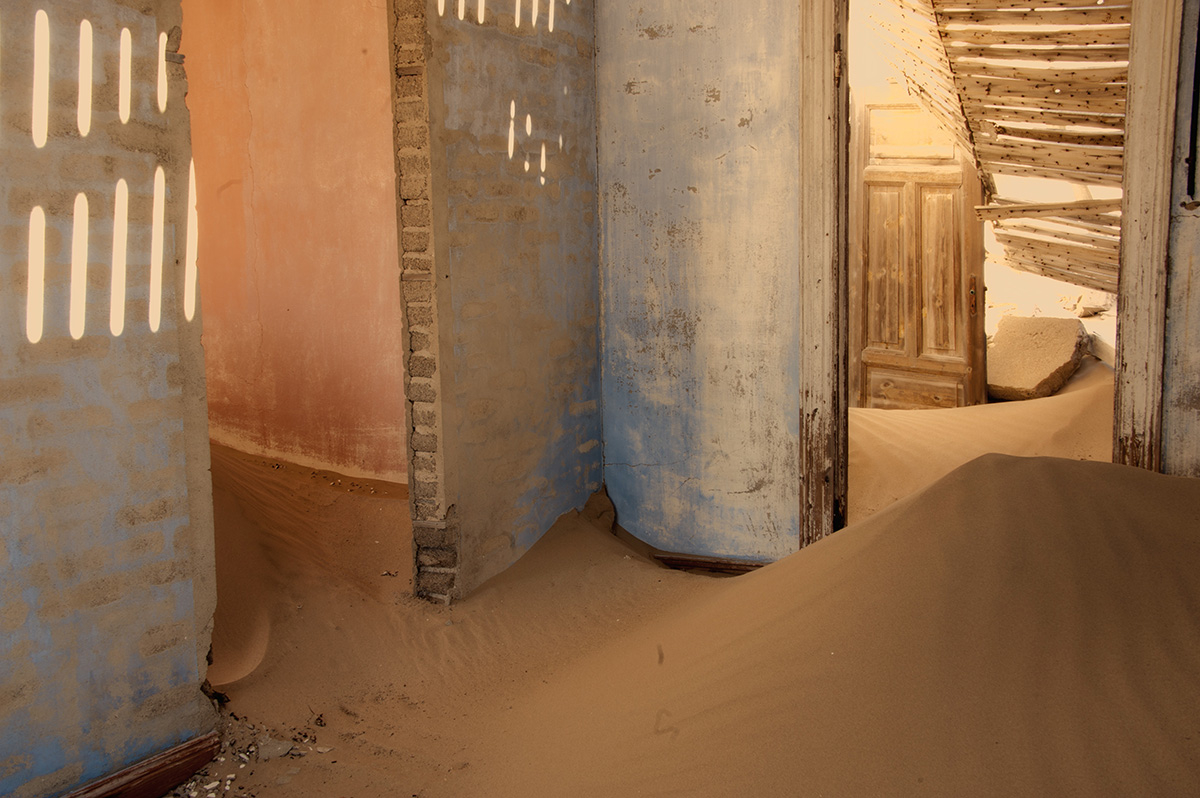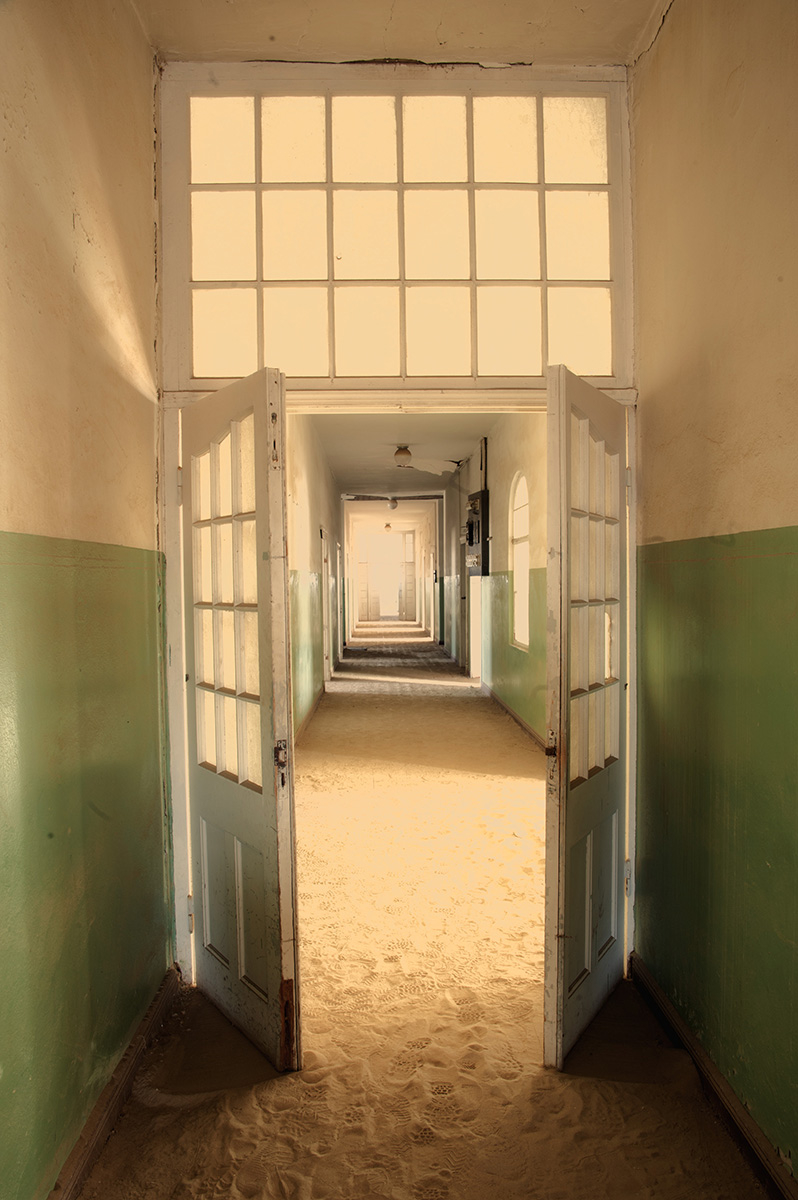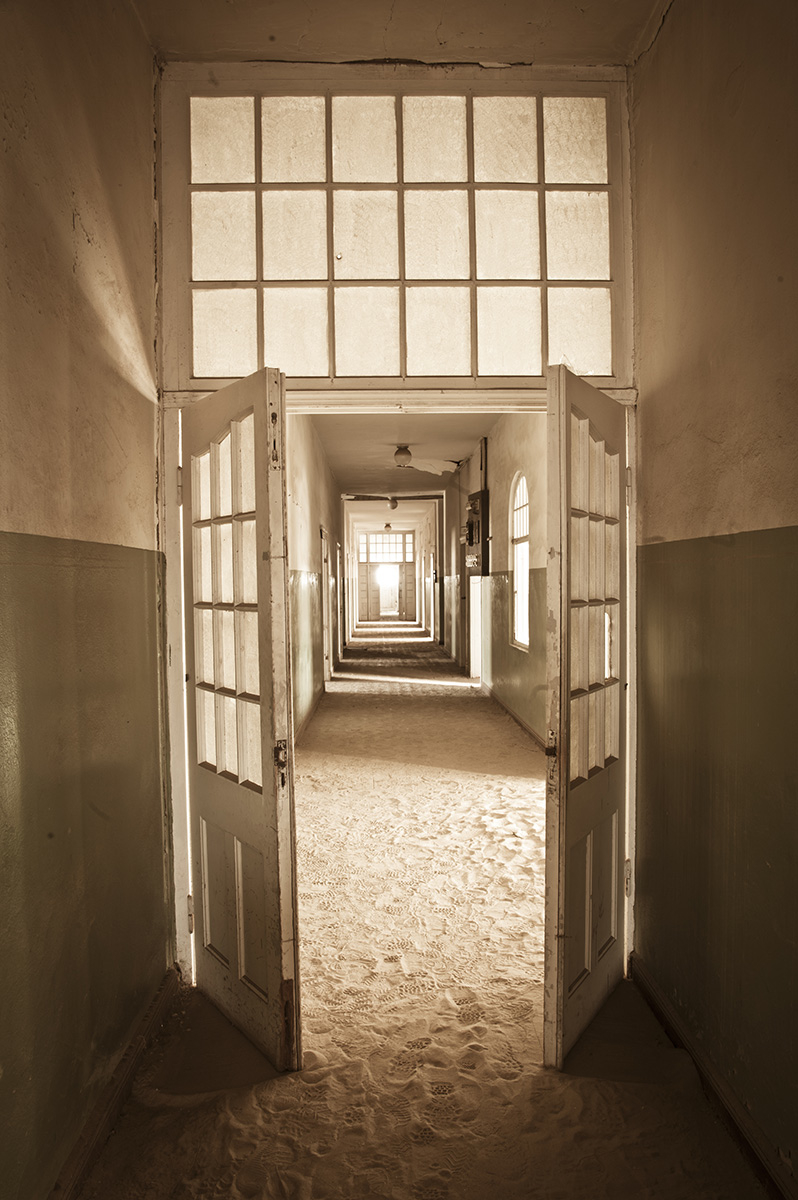KOLMANSKOP
Sperrgebiet (forbidden territory)
Near to the Port of Luderitz, Namibia
2013
In 1908, a railway worker, Zacharias Lewala found a sparkling stone in the sand he was shoveling away from the railway line near Kolmanskop. When it was confirmed that it was a diamond, the news spread like wildfire, sparking a huge, frantic diamond rush, causing fortune hunters to converge in droves on Kolmanskop.
The town soon developed, becoming a bustling little center in the harsh environment of the Namib Desert. Large, elegant houses were built, and soon it resembled a German town, complete with an impressive array of amenities including a hospital, ballroom, power station, school, theater, sports hall, 4-lane skittle alley, ice factory, and the first x-ray station in the southern hemisphere. There was even a swimming pool! Probably because of its isolation, Kolmanskop developed into a lively little haven of German culture, catering to the needs of the affluent colonialists.
The development of Kolmaskop reached its pinnacle in the 1920’s, and declined after World War I, when diamond prices crashed. At that time its population consisted of 300 German adults, 40 children, and 800 Owambo contract workers.
Within a span of 40 years Kolmanskop lived, flourished, and died. Now, it is being reclaimed by the desert.
Geraldine Gill




